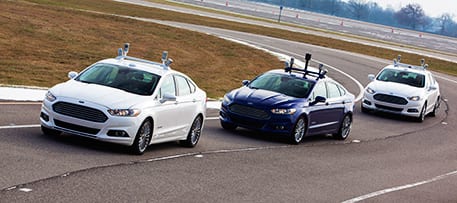A set of national guidelines to support trials of automated vehicles on Australian roads has been published, in a first regulatory step towards the commercial deployment of “driverless” cars, and an era of new mobility.
The guidelines – a joint publication of the National Transport Commission (NTC) and Austroads – support state and territory road agencies in providing exemptions or permits for trials, and give greater certainty to industry on conditions for trials.
Released on Wednesday, they are the first stage of a reform roadmap, agreed to by ministers in November 2016, which aims to develop an end-to-end regulatory system for eventual commercial deployment of automated vehicles.
So far in Australia, the South Australian government has been the most pro-active state in supporting autonomous vehicle R&D, last year becoming the first state to legalise controlled testing of driverless cars on public roads.
In October 2016, it launched a $10 million grant funding round aimed at accelerating the development and rollout of autonomous and connected vehicles.
And in January this year, UK-based autonomous transport developer RDM Group revealed plans to establish its Asia-Pacific headquarters in Adelaide, citing “massive demand” for creating autonomous mobility solutions in Australia.
But Australia remains behind the global pace on the technology, with some 14 trials underway in California alone in the US by mid-way through last year.
A recent report has predicted that by 2030, within 10 years of regulatory approval of autonomous electric vehicles (A-EVs), 95 per cent of all US passenger miles traveled would be be served by on-demand, autonomous, electric vehicles that will be owned by fleets rather than individuals.
NTC chief, Paul Retter, said the new Australian guidelines were designed to be flexible and easy for industry to use, to support trials across the nation.
“We have worked closely with vehicle manufacturers, technology developers and federal, state and territory governments to ensure our approach to trials is nationally-consistent and reflects best practice,” Retter said.
“With a range of different environmental conditions, a receptive population and now guidelines for the safe conduct of trials, Australia has the potential to become a global testing and innovation hub for automated vehicles.”
The two groups said that industry would have “enormous flexibility” in the type of trials that could be run, as long as they satisfied key requirements, including safety plans and insurance.
Trialling organisations would also need to provide data from trials to road transport agencies, including details of any crashes.
“This approach allows industry to innovate – they just need to demonstrate that they are managing the risks, including any risk to other road users,” Retter said.
State and territory governments are also reviewing their exemption powers to ensure that they have appropriate powers to support trials.
“We’re looking forward to the Australian public getting a first-hand view of the benefits of these new and emerging technologies,” said Nick Koukoulas, CEO of Austroads.
The guidelines are available for download on the NTC and Austroads websites.











